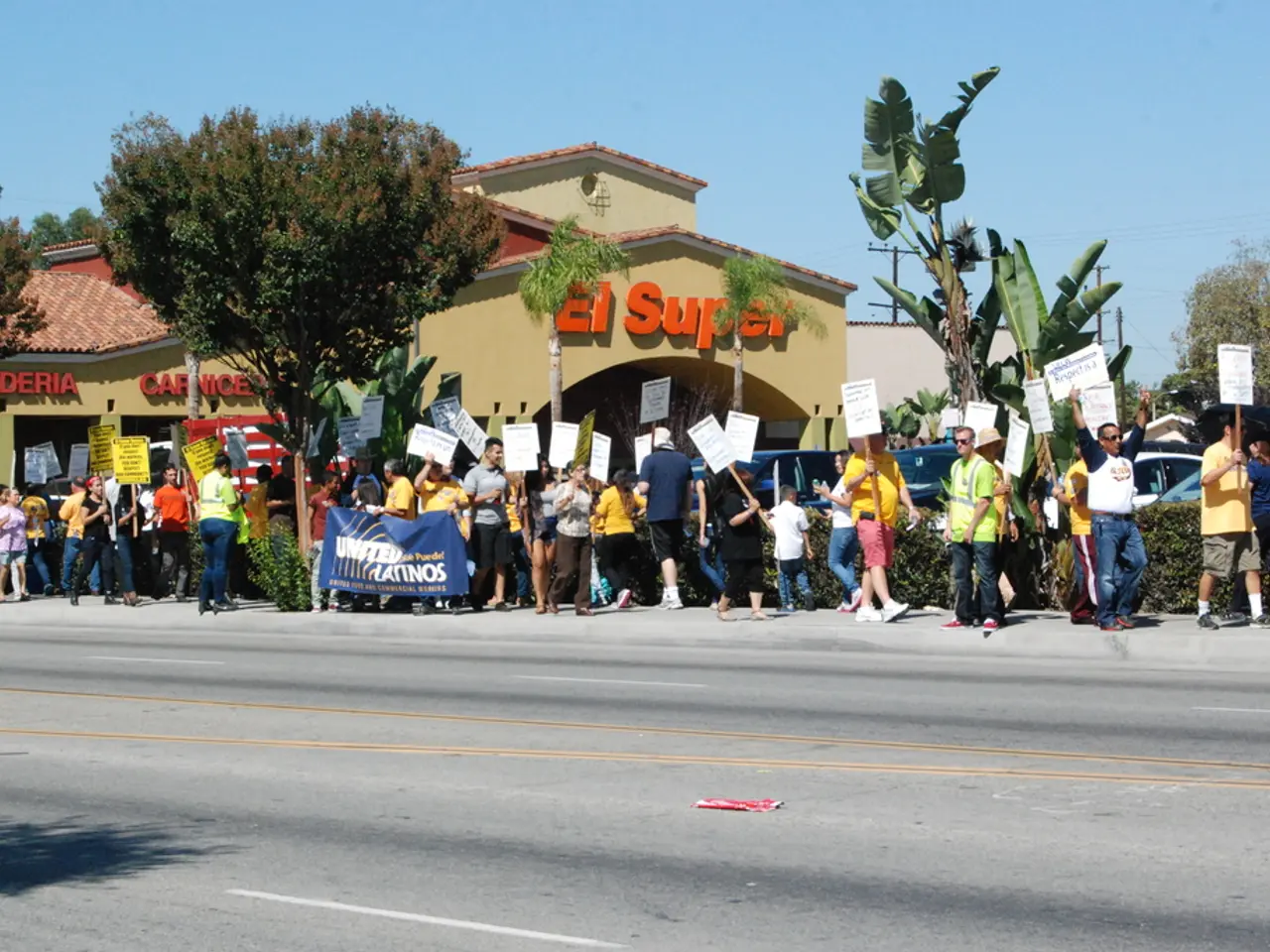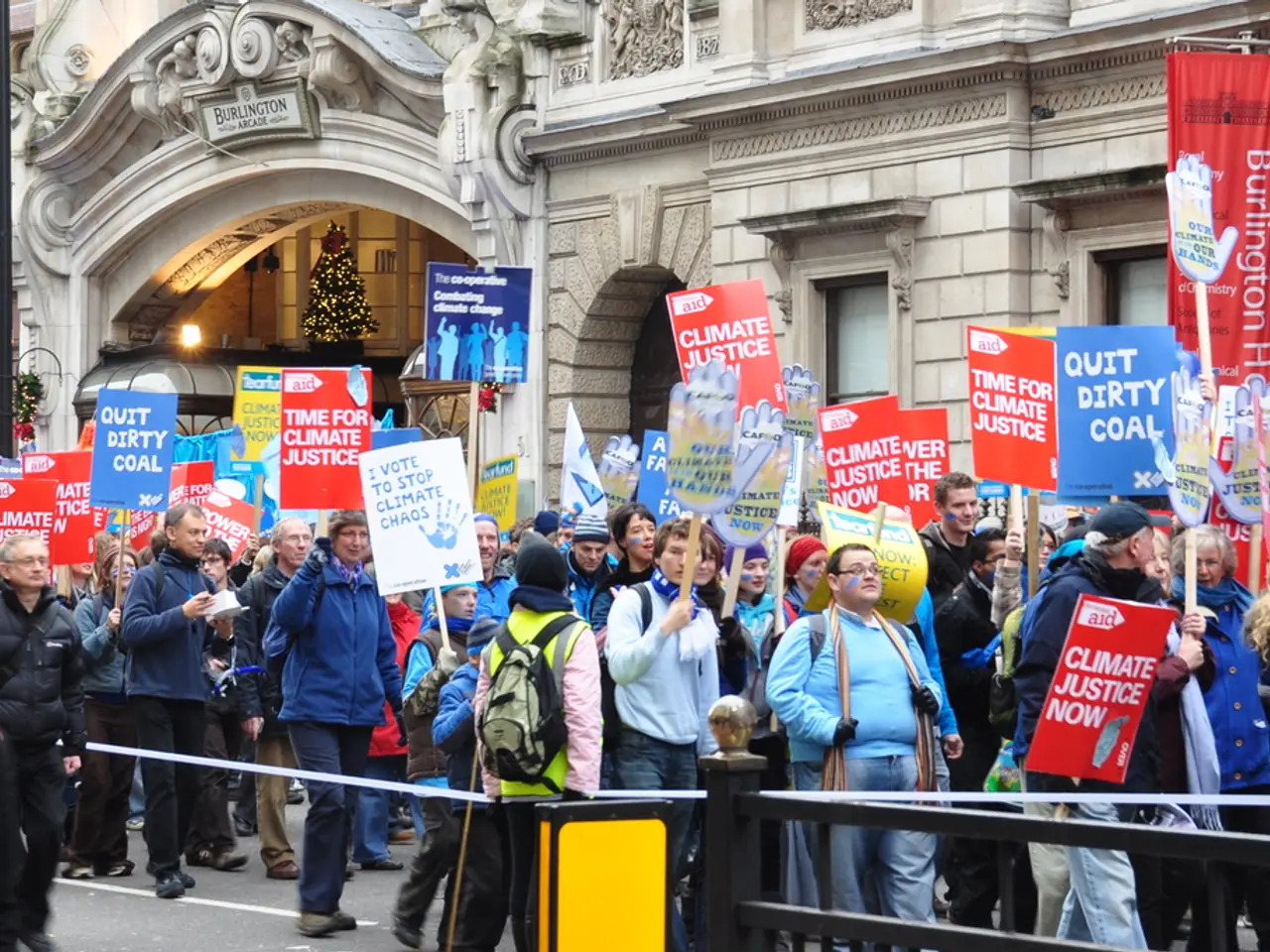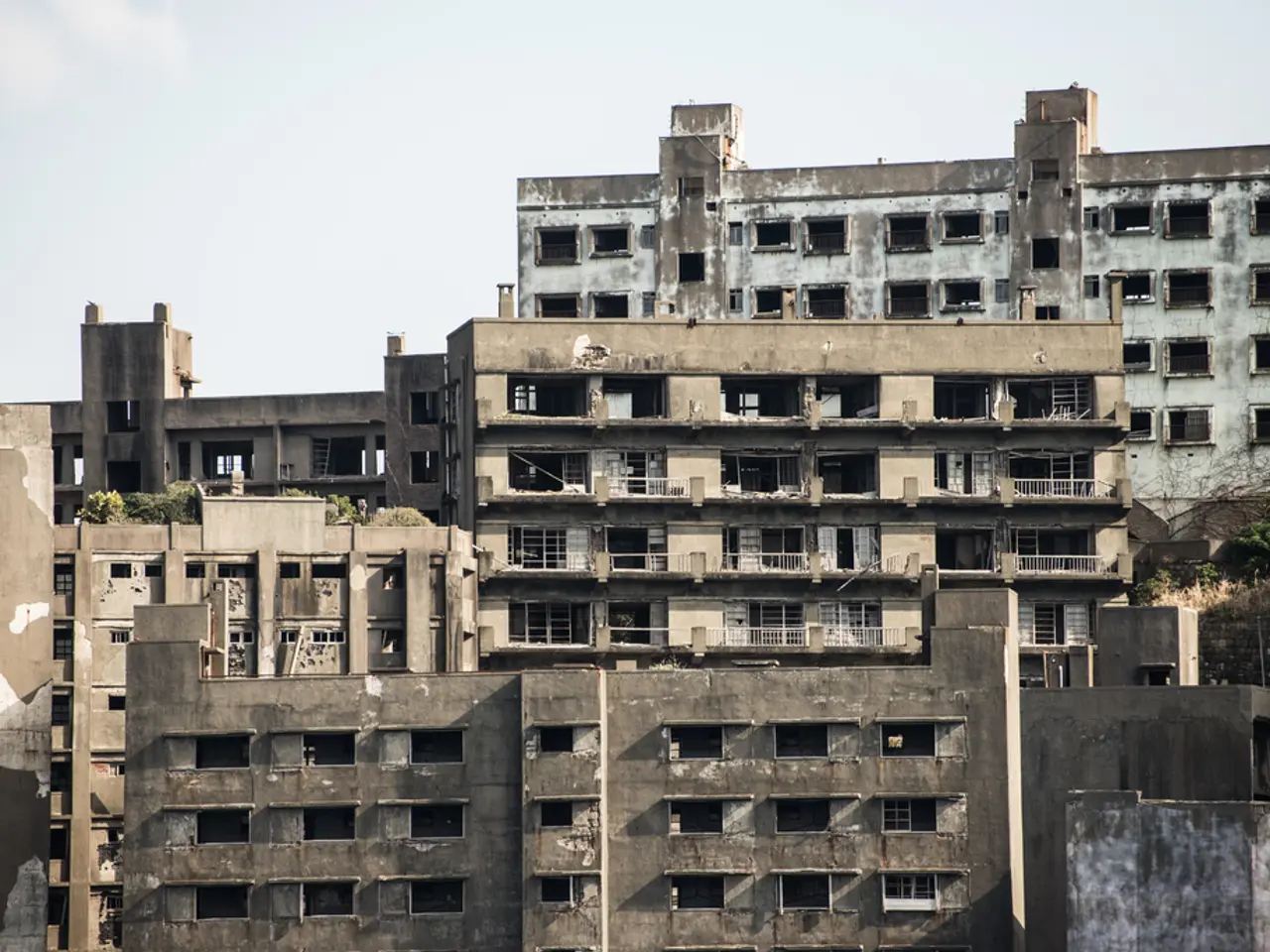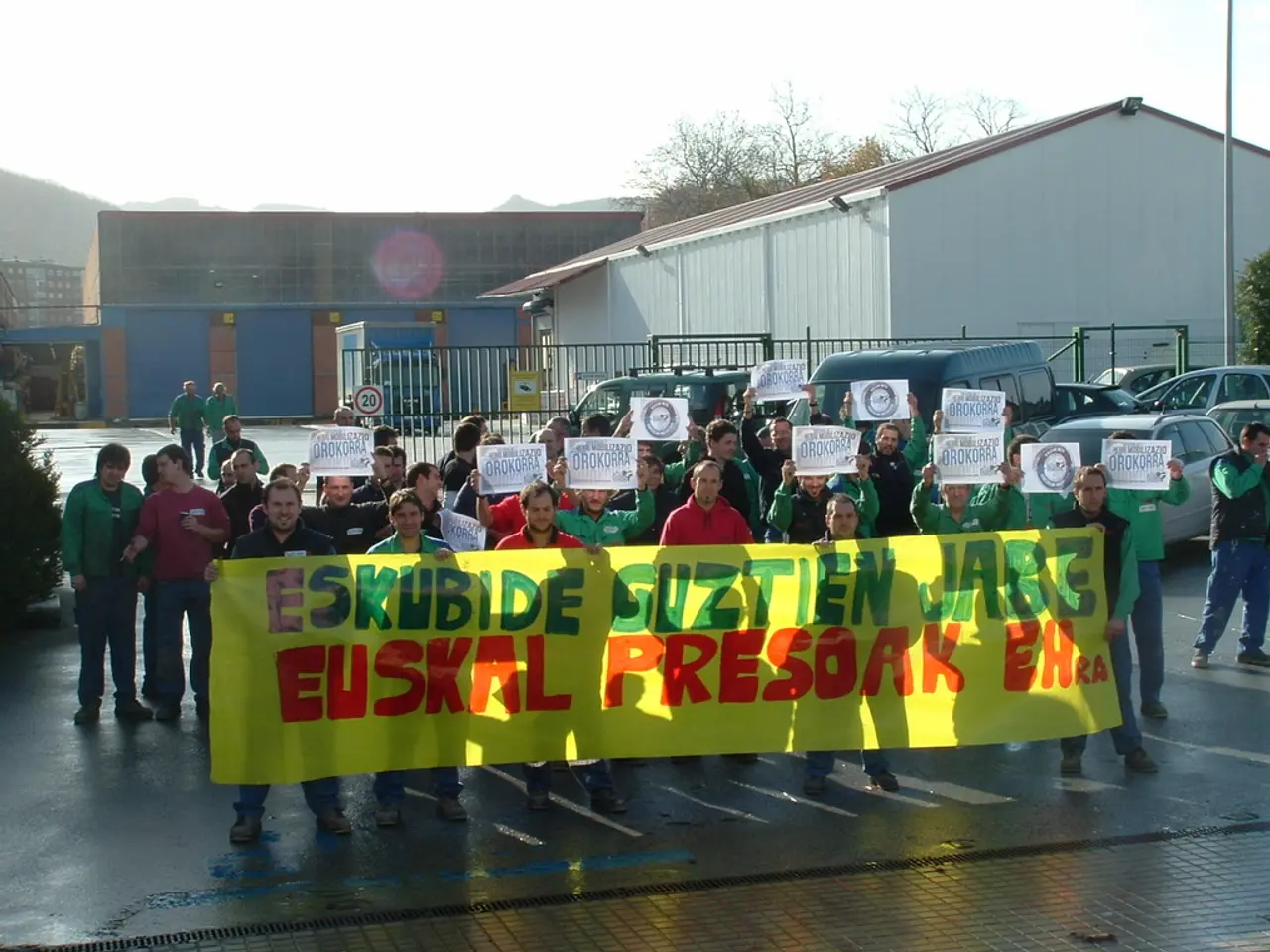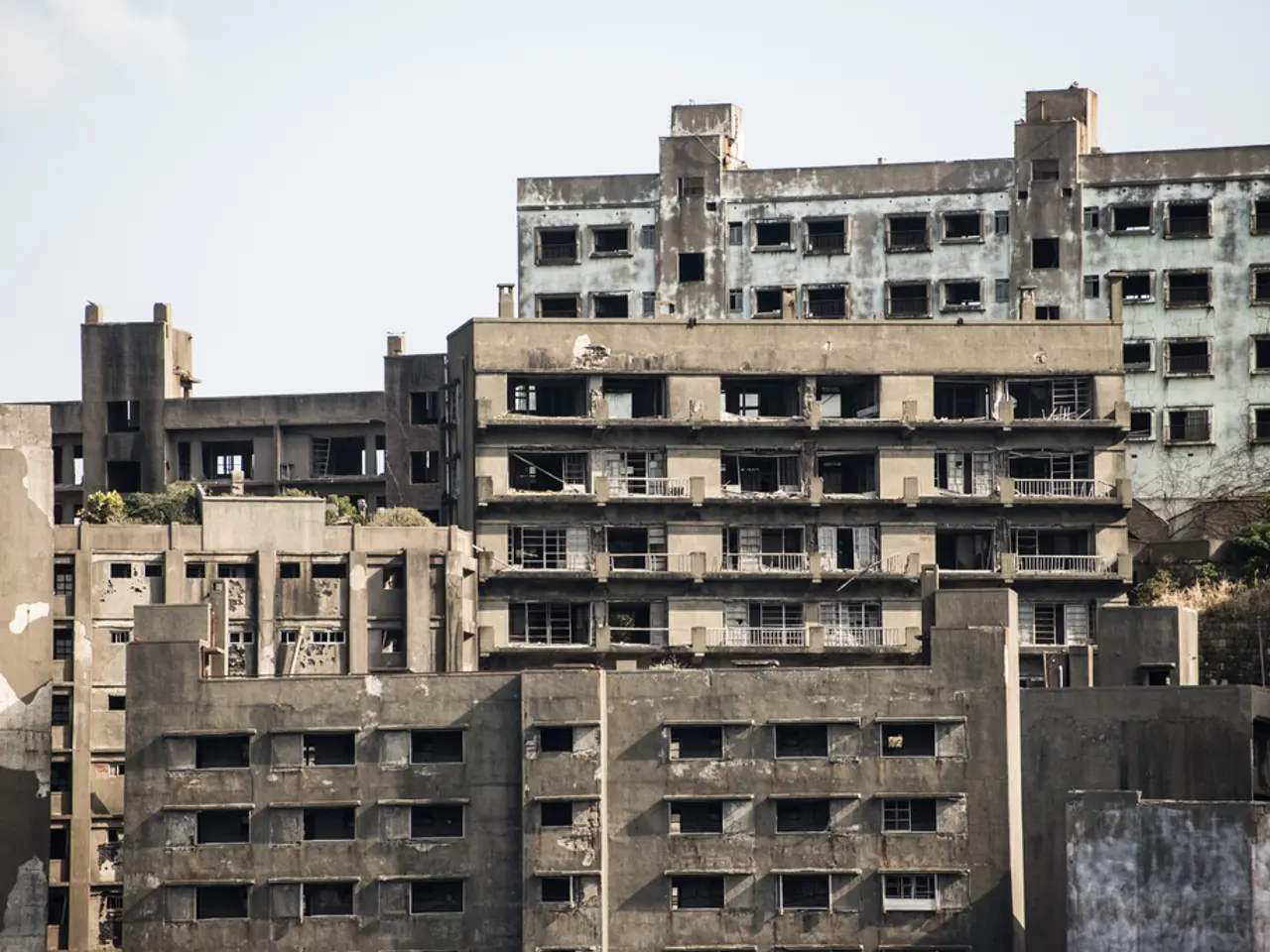Revised congressional district boundaries in California may pose challenges for these Republican representatives
California Plans Special Election to Redraw Congressional District Maps
California is set to hold a special election in November 2025, asking voters whether to temporarily redraw the state's congressional district maps for the 2026, 2028, and 2030 elections. This move comes as a response to Republican-led gerrymandering in states like Texas, aimed at protecting and potentially increasing Democratic House seats in California.
The proposed plan would only take effect if Republican-led states complete partisan gerrymanders favoring GOP gains. If triggered, the aim is to reinforce Democratic advantages in California to offset GOP gains elsewhere due to aggressive redistricting tactics. The redrawing would create maps that make Republican incumbents vulnerable and potentially expand Democratic-held seats in California's congressional delegation.
California Democrats, including top legislators, strongly back the plan, seeing it as a national fight for democracy and a tool to protect Democratic representation in Congress. Texas Democratic lawmakers have also joined California leaders to support this initiative.
Notable Republican incumbents who may be affected by the proposed changes include Reps. Ken Calvert and Young Kim. Calvert, the longest-serving member of California's Republican delegation, represents a Riverside County district that includes Lake Elsinore, Menifee, Palm Springs, and Corona. Kim, who was first elected to Congress in 2020, represents a Republican district mostly in Orange County.
Other Republican representatives who might see changes in their districts include Reps. Darrell Issa and David Valadao. Issa, who has served in Congress for more than two decades, could see his safely Republican district become purple under the tentative plans. Valadao represents the California district with the highest percentage of Medicaid recipients, and the proposed redistricting plan may add more registered Democrats to his predominantly Latino district in the Central Valley.
Rep. Doug LaMalfa, who represents a safe Republican district in Northern California, could see changes, including a potential shift south to include parts of Sonoma County wine country and shifts of conservative rural areas to other districts.
The Republican delegation accuses Gov. Newsom of trying to wrest power from the independent redistricting commission and "place it back into the hands of Sacramento politicians to further his left-wing political agenda." In response, Gov. Newsom has stated that California will push back against the Texas GOP's efforts to gain five additional congressional seats for Republicans.
Rep. Kevin Kiley has introduced a bill to nullify any newly drawn congressional boundaries adopted by states before the next U.S. census in 2030. If passed, this bill could potentially complicate California's plans for temporary redistricting.
Concerns about the redistricting plan have been expressed by various groups, including Rep. Doug LaMalfa, who voiced concerns about the plan and stated that he is certain Republicans will litigate the new map if Democrats push ahead. Other groups such as Common Cause and the League of Women Voters have also expressed concerns.
The state's nine-member Republican delegation has stated that Trump won 38% of the presidential vote in California last year, but Republicans hold fewer than 1 in 5 of the state's 52 House seats. This disparity has fuelled the debate over redistricting and the need for a more equitable representation of the state's voters.
In summary, California's proposed redistricting plan aims to protect and potentially increase Democratic House seats in the state, creating more favorable district boundaries and counteracting Republican-led gerrymandering in other states. The plan is currently supported by California Democrats and is framed as a defensive response to GOP redistricting strategies elsewhere.
- The upcoming California special election in 2025 proposes temporary redrawing of the state's congressional district maps for the following elections.
- This move aims to offset GOP gains due to aggressive redistricting tactics in other states.
- The proposed redistricting targets vulnerable Republican incumbents and expands Democratic-held seats in California's congressional delegation.
- Key representatives like Reps. Ken Calvert, Young Kim, Darrell Issa, David Valadao, and Doug LaMalfa may be affected by the proposed changes.
- California Democrats, including top legislators, support the plan as a defense of democracy and Democratic representation in Congress.
- The Republican delegation accuses Gov. Newsom of trying to manipulate the redistricting process to serve his political agenda.
- Gov. Newsom assures that California will counteract Texas GOP's efforts to gain congressional seats.
- Rep. Kevin Kiley has proposed a bill to nullify any newly drawn congressional boundaries before the 2030 U.S. census, which may complicate California's plans.
- Various groups, including Rep. Doug LaMalfa and organizations like Common Cause and the League of Women Voters, have raised concerns about the proposed redistricting.
- In 2020, Republicans held fewer than 1 in 5 of California's 52 House seats despite garnering Trump's 38% of the presidential vote in the state.
- Hollywood's opinion on politics might influence Californians' perspectives on election issues.
- Los Angeles, being the entertainment capital of the world, plays a significant role in shaping California's political landscape.
- The proposed plan, if enacted, would hold implications for policy-and-legislation, law, and crime-and-justice.
- The redistricting may also impact car-accidents policies due to changes in the distribution of geographical regions.
- Sports figures and teams in California, such as NFL teams, MLB teams, NHL teams, NBA teams, and even golf players, might take a stance on this political issue.
- The sports-betting industry might be affected by the proposed redistricting as it covers various sports like football, baseball, hockey, golf, and racing events.
- Weather-forecasting, being crucial to countless significant activities in California, like agriculture, might be indirectly influenced by the redistricting.
- The upheavals in war-and-conflicts, local or global, might divert the focus from the political debates surrounding redistricting in California.
